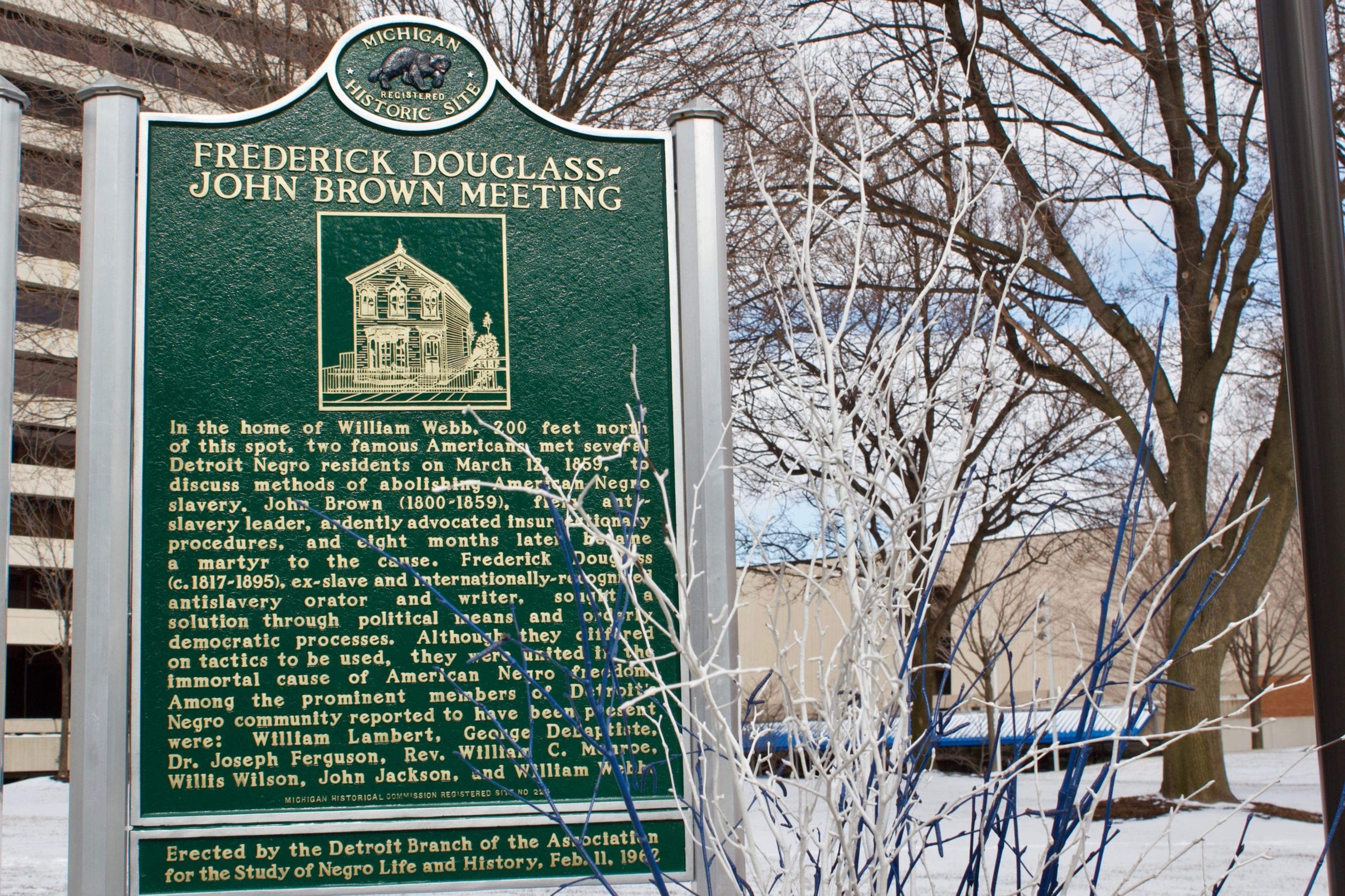A Detroit Connection: When Frederick Douglass Met John Brown
Krystal Clark
| 2 min read

John Brown and Frederick Douglass were two of America’s most prominent abolitionists. Brown, a white man, believed slavery was an immoral practice and an affront to God. Douglass, a former slave, had first-hand knowledge of the cruelty black people endured within the institution.
Both men fought for its eradication but used drastically different methods. Douglass was a writer, orator, and statesman who focused on changing policy. While Brown was considered a radical, who often advocated violence. With a small army, he’d led multiple rebellions and helped countless people escape bondage.
Despite their disparate approaches, Brown and Douglass shared a common goal – the emancipation of black people. By the 1850s, they’d each become popular figures in the anti-slavery movement. On March 12, 1859, the two men met in Detroit, Michigan where they were hosted by local abolitionist, William Webb.
The meeting’s objective was to create a viable plan to end slavery. One that present leaders could agree on and realistically put into action. Yet, Brown and Douglass were unable to compromise on their opposing views. Brown believed the path to freedom required blunt force. He suggested building an army, stockpiling weapons, and attacking individual plantations.
Douglass respected Brown’s passion but felt excessive violence would do more harm than good. A mass rebellion could further enrage white Americans, particularly those in policy-making positions. The men found themselves at an impasse and opted to go their separate ways.
Later that year, Brown led a raid on a federal armory located in present-day West Virginia. It resulted in his capture, a highly-publicized trial, and execution by hanging. Douglass wasn’t present during the raid but was viewed as a possible accomplice. For his own safety, he fled to Canada until he was legally cleared.

In 1861, the American Civil War began. It was a major step in realizing both Brown and Douglass’ dream. During the conflict, President Lincoln signed the Emancipation Proclamation, which gave “free” legal status to over 3 million black people. In 1865, the war ended, and slavery was abolished with the passing of the 13th Amendment.
Brown never saw this historic day, but Douglass did and continued to work throughout Reconstruction. Over 100 years later, Detroit residents are still reminded of their impact and famous meeting. The city honored their respective legacies with a historical marker on East Congress Street, where Blue Cross Blue Shield of Michigan currently resides.
If you found this post helpful, you might also enjoy:
Photo credit: A Healthier Michigan





